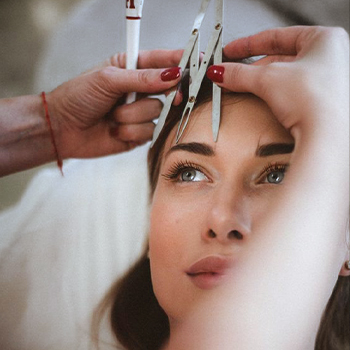When it comes to achieving perfectly sculpted eyebrows, two popular techniques often come into consideration: microblading and traditional tattooing. While both methods aim to enhance eyebrows, they differ significantly in their approach, results, and longevity.
1. Precision in Technique:
Microblading: Involves the use of a handheld tool with fine needles to create precise, hair-like strokes. This allows for a more natural and realistic appearance, mimicking the look of individual eyebrow hairs.
Traditional Tattooing: Utilizes a machine to deposit pigment deeper into the skin, resulting in a bolder and more defined look. However, this method may lack the subtlety achieved by microblading.
2. Pigment and Depth:
Microblading: Deposits pigment into the superficial layers of the skin, providing a semi-permanent result. This allows for flexibility and adjustments over time as trends and preferences change.
Traditional Tattooing: Goes deeper into the dermis, leading to a permanent outcome. While this may be desirable for some, it can be limiting for those who want to adapt their eyebrow style.
3. Appearance and Naturalness:
Microblading: Creates a softer and more natural appearance, particularly suitable for those seeking a subtle enhancement without the boldness of traditional tattooing.
Traditional Tattooing: Tends to produce a more defined and solid look, which may be preferred by individuals looking for a more dramatic and enduring effect.
4. Pain and Discomfort:
Microblading: Generally considered less painful due to the superficial nature of the procedure. Numbing creams are often applied to minimize discomfort during the process.
Traditional Tattooing: Can be more uncomfortable as the tattoo machine penetrates deeper into the skin. Pain tolerance may vary among individuals.
5. Longevity and Maintenance:
Microblading: Results typically last 1-3 years, allowing for adjustments and style changes. Regular touch-ups are recommended to maintain the desired look.
Traditional Tattooing: Results are permanent, requiring careful consideration as trends and preferences evolve. Removal or adjustments are more challenging.
6. Suitability for Eyebrow Trends:
Microblading: Ideal for achieving the current trend of natural, fuller-looking eyebrows. The technique allows for adapting to evolving fashion and beauty standards.
Traditional Tattooing: May be preferred by those seeking a classic, timeless look, but may not easily align with changing trends.
In conclusion, the choice between microblading and traditional tattooing depends on individual preferences, desired outcomes, and the willingness to commit to a particular style. While microblading offers flexibility and a more natural look, traditional tattooing provides a long-lasting and bold effect. Understanding these differences empowers individuals to make informed decisions when it comes to enhancing their eyebrows.

